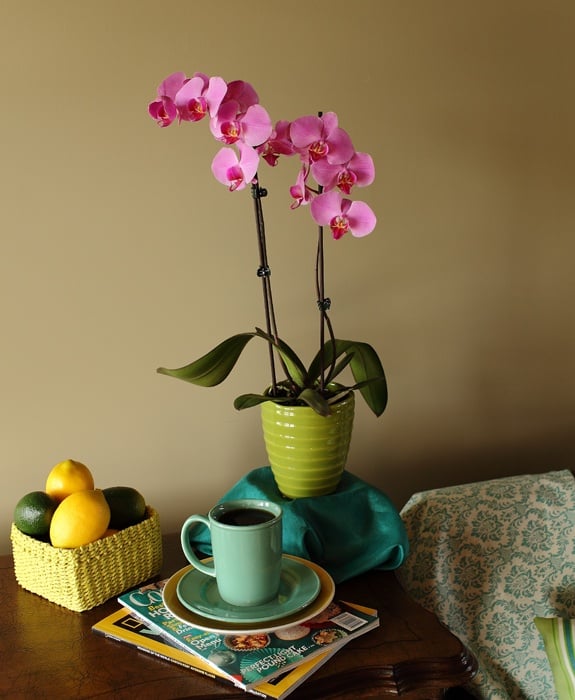
Phalaenopsis orchids have a reputation for being low maintenance plants for a reason—their watering schedule is easy to maintain and they can thrive in a wide range of environmental conditions. However, your orchid is susceptible to a handful of diseases and infections, so you do still need to take proper precautions. Luckily, most orchid diseases are easily treatable and it’s easy to add preventative measures into your weekly care routine.
Here are five simple ways to prevent orchid diseases:
If your orchid does get sick, it could experience a quick decline. Checking your orchid’s leaves and stems regularly for signs of infection—like spotted or browned leaves—or pest infestation can help you catch a problem before it becomes deadly to your plant. Hopefully you’re already displaying your orchid in a prominent place in your home and can easily watch over it for signs of trouble.
Any equipment that comes in contact with your orchid, whether during repotting or trimming, should always be sterilized. Use hot water and soap to make sure your tools are clean and won’t put your plant at risk for developing diseases.
Giving your orchid too much water can lead to root rot and bacterial growth. By following the three-ice-cube watering method, you can make sure your orchid gets the right amount of water every week.
Repotting your orchid every 12 to 18 months is important for more reasons than making sure it’s in the right sized pot. Over time, your potting mix breaks down and decomposes, so sticking to a set repotting schedule can help keep your plant from getting sick.
In general, Phalaenopsis orchids thrive in warmer temperatures (65 to 80 degrees is an ideal daytime temperature) and relatively high humidity, but consistent exposure to excessive heats and humidity levels above the recommendation puts your orchid at risk. Since bacteria and fungi are more likely to grow in hot, humid environments, make sure to maintain the temperature and humidity levels of your orchid’s environment. If your orchid is exposed to an excessively hot or humid environment for a prolonged period of time, make sure to adjust the temperature and humidity accordingly and watch carefully for any signs of future illness.
These five precautionary measures can help keep your orchid healthy and thriving all year. But if your orchid does show signs of disease, don’t panic. Download our free leaf guide to find out what your orchid’s leaves may be telling you.

Copyright Just Add Ice® Orchids 2023